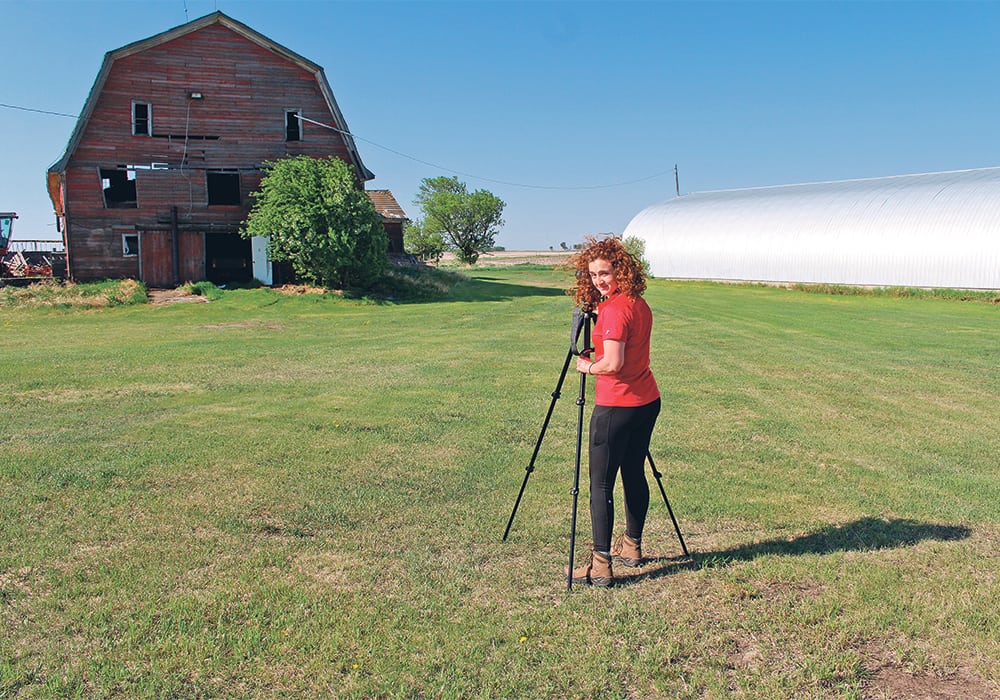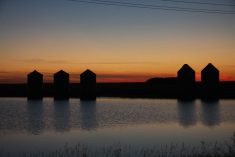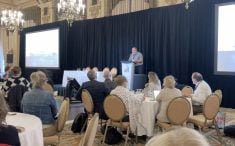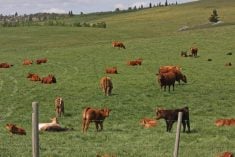Sydney Hampshire has spent the last two summers documenting the history of old barns in Alberta’s Flagstaff County
When Sydney Hampshire spots an old barn along the side of a highway, she doesn’t only see a relic of the past. She sees a story, an untold history.
That’s why she’s made it her mission to document the buildings. She’s made a book, Heritage Barns of Flagstaff: Volume 1, dedicated to barns in Alberta’s Flagstaff County, telling the unique stories of the people who had once used them.
“There are interesting barns out here and you don’t really think about the stories behind them,” she said.
Read Also

Know what costs are involved in keeping crops in the bin
When you’re looking at full bins and rising calf prices, the human reflex is to hold on and hope for more. That’s not a plan. It’s a bet. Storage has a price tag.
One story in particular dates back to 1908 and involves Jack Dubois’ notorious rustler gang stealing cattle from rancher Martin Ullrickson in the Galahad area.
According to family history, when Ullrickson was bringing his stolen cattle back home, a rustler confronted him at the gate. Ullrickson aimed his revolver at the rustler, ordering him to open the gate. The rustler complied.
Days following that altercation, however, a rustler had fired shots at Ullrickson on his land. The rustler missed, fortunately, but those bullet holes can still be seen today on the old house, Hampshire said.
“That really speaks to how Alberta has changed,” she said. “It’s unreal.”
Hampshire, a former student from the University of Alberta, got the idea for the book when she was assigned to do a project through the Peter Lougheed Leadership College.
Students were tasked with going out of their comfort zone and to practice a leadership role. Hampshire, who grew up in a farming community, said she wanted to do the project about rural Alberta because she’s always been passionate about issues affecting small communities.
As well, she said Flagstaff County officials had already been thinking about doing a project like this. So, after she spoke with them, the idea came to life.
She spent two summers of field research to put the book together. She’s also created a database online that contains more details on the barns and features others that couldn’t make it into the book.
“I remember being hesitant at first, wondering if people wouldn’t appreciate it,” she said.
“I thought there would be cynical farmers questioning why we would spend money on this, but it was the complete opposite. There has been a lot of positive participation, something I wouldn’t have ever imagined.”
On top of delving into the unique stories behind the barns, the book also looks to the future, discussing how old barns have been preserved as historic resources or repurposed as family recreation spaces.
Hampshire said she hopes the project gets people to think about the importance of knowing their own heritage, as well as the importance of knowing Alberta’s history.
“We have to document these structures before they are gone,” she said. “We have to see the value in history now and have the foresight to preserve it for future generations.”
She is currently working on a second book to feature more barns. She has also been documenting churches, homesteads and landmarks in the county.
More details on the project can be found at www.heritagebarnsofflagstaff.com.

















